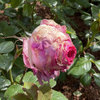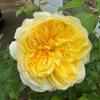(Golden Celebration x Angel Face) What will result?
AndrewBarocco
10 years ago
Related Stories

YELLOWColor of the Week: Celebrate Summer With Sunny Yellow
Bring home some of that glorious summer sunshine
Full Story
GREAT DESIGNERSCan You Match These Faces With Their Famous Designs?
Architects' portraits are less familiar than their iconic designs, but take a good look — you might see a connection
Full Story
REMODELING GUIDESRegional Modern: Stunning Innovations in Los Angeles
Legendary modernists, topography and climate fuel L.A.'s groundbreaking architecture
Full Story
HOUZZ TOURSMy Houzz: A Cabin of Curiosities in Los Angeles
A sheep's head here, a beaded fringe there and layers of exotic prints and art everywhere work wonderfully in a personal "Shangri-La"
Full Story
LIFERetirement Reinvention: Boomers Plot Their Next Big Move
Choosing a place to settle in for the golden years? You're not alone. Where boomers are going and what it might look like
Full Story
ROOM OF THE DAYRoom of the Day: Bedroom Takes a Creative Approach to A-Frame Design
Rather than fix the strange layout, this homeowner celebrated it by mixing the right materials and textures
Full Story
PRODUCT PICKSGuest Picks: Dog-Loving Decor
Pamper your pup with design-friendly bowls and beds, and treat yourself to artwork and more celebrating your furry friend
Full Story
CRAFTSMAN DESIGNMy Houzz: Small-Space Living in a Restored Bungalow
See how this homeowner celebrates his personal style, his flea market finds and the heritage of his 1919 Long Beach home
Full Story
ROOM OF THE DAYRoom of the Day: A Playful Palm Springs Style in L.A.
The great room in Kelly Oxford’s 1960s Los Angeles home combines a monochromatic palette with bursts of color — and quirky touches
Full Story
HOUZZ TOURSHouzz Tour: Stunning Desert Hillside Home in Arizona
An extraordinary, expansive home near Phoenix celebrates and interacts with the beauty of its natural surroundings
Full StorySponsored
Industry Leading Interior Designers & Decorators in Franklin County
More Discussions









roseblush1
AndrewBaroccoOriginal Author
Related Professionals
Maple Valley Landscape Architects & Landscape Designers · Wrentham Landscape Architects & Landscape Designers · West Chester Landscape Architects & Landscape Designers · Surprise Landscape Contractors · Byram Landscape Contractors · El Mirage Landscape Contractors · Glendale Heights Landscape Contractors · Hannibal Landscape Contractors · Hoffman Estates Landscape Contractors · La Verne Landscape Contractors · Lehigh Acres Landscape Contractors · Metairie Landscape Contractors · Newberg Landscape Contractors · Palatine Landscape Contractors · Whittier Landscape Contractorsroseseek
susan4952
AndrewBaroccoOriginal Author
seil zone 6b MI
roseseek
AndrewBaroccoOriginal Author
roseseek
growing_rene2
growing_rene2
roseblush1
the_morden_man
AndrewBaroccoOriginal Author
roseblush1
roseseek
Molineux
roseseek
dublinbay z6 (KS)